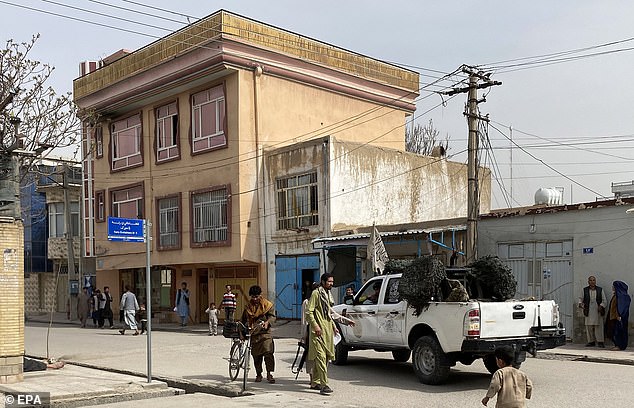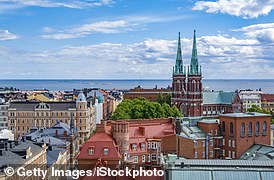A mesmerizing graph shows how the top 20 happiest countries in the world have changed over the past decade… and the surprising country that now has the happiest countries under 30
A mesmerizing graph shows how the happiest countries in the world have changed over time – with the exception of first place.
Finland, home to 5.5 million people, was today named the happiest country in the world for the seventh consecutive year.
It means that all five Scandinavian countries have been ranked in the top 10 most contented places on earth over the past decade, despite their long, cold and dark winters.
Afghanistan, meanwhile, remains at the bottom of the list for the fifth consecutive year World Happiness Reporta global ranking of more than 140 countries.
This is also evident from separate figures released today Lithuania has the happiest young people under thirty.
Finland has been named the happiest country in the world for the seventh year in a row, according to an annual UN-sponsored index. In the photo, Helsinki

War-scarred Afghanistan remains the unhappiest country in the list of more than 140 countries, retaining the bottom spot. Pictured: Mazar-e Sharif, provincial capital of Balkh Province, Afghanistan
The UN-sponsored report, now in its twelfth year, is based on assessments of the happiness of tens of thousands of people, as well as economic and social data.
It gives a happiness score on a scale of zero to 10, based on an average score over a three-year period.
The rankings are loosely tied to a country’s prosperity, but other factors such as life expectancy, social ties, personal freedom and corruption also appear to influence responses.
The rankings for both Britain and the US have fallen in 2024. However, Britain has been in the top 20 happiest countries for all but two of the past ten years.
It ranked highest in 2020, at 13th.
Conversely, Togo has consistently ranked in the bottom twenty countries over the past decade.
Egypt, Haiti, Rwanda and Sierra Leone are among the other countries that often rank in the bottom 20.
In the new 2024 UN report, Finland received a score of 7.74 out of 10, while Afghanistan received a score of 1.72. By comparison, Britain’s was 6.72.
The US’s score was marginally lower, leaving the country out of the top 20 since the report began in 2012.
Despite several overlapping global crises between 2021 and 2023, including Covid and the war in Ukraine, most countries recorded global life satisfaction scores as high as those in the years before the pandemic, the researchers found.
Across generations, analysts found that people born before 1965 tend to be happier than those born after 1980.
Britain ranked 32nd for ‘young people’ – those aged 30 and under – and 27th for ‘younger middle-aged people’, aged 30 to 44.
Among “middle-aged older people” (45-59 years old) it ranked 19th, while “older people” (those aged 60 and over) ranked 20th.
Meanwhile, the US ranks 62nd in happiness among young people. It came in 10th place among people over 60.
It scored 42nd in younger, middle-aged people and 17th in older, middle-aged people.
It marked one of the biggest differences in rankings between age groups, with the country recording a gap of more than 50 places between ‘youth’ and ‘old’.
Canada also saw a 50-point gap, with the over-60s taking 8th place for happiness, while the under-30s scored just 58th.
Experts say the data shows a worrying trend where young people in Western Europe and North America are experiencing the equivalent of a ‘midlife crisis’.
Professor Jan-Emmanuel De Neve, an expert in economics and behavioral sciences at the University of Oxford and editor of the report, said: ‘By bringing together the available data on the well-being of children and adolescents around the world, we documented we see disturbing declines, especially in North America. America and Western Europe.
“To think that children in some parts of the world are already experiencing the equivalent of a midlife crisis requires immediate policy action.”
Lithuania (19th overall) had the happiest young people in the 2024 global rankings, while Denmark (2nd overall) took first place among those over 60.
Croatia had the largest gap between the two age groups, with the ranking for young people (14th) being 66 places higher than for older people (80th).
The report – published on the International Day of Happiness – is based on self-reported data from people surveyed in each country.
Participants are asked to rate their lives out of 10 and then an average score for the country is calculated based on the ratings received over the past three years.

